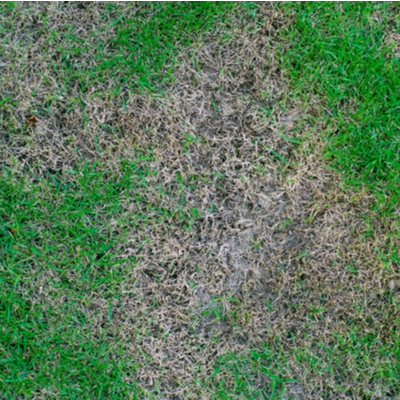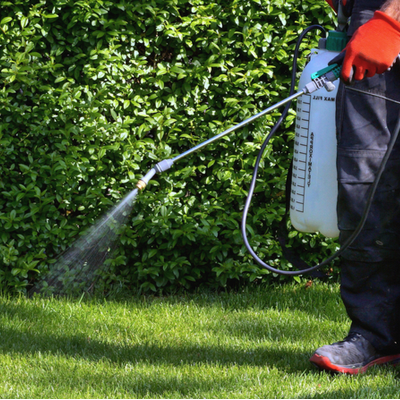A homeowner’s worst nightmare is waking up and discovering your lawn is infected with a lawn disease. Because of our location in the midwest and our climate, conditions in the spring are ideal for the formation of common lawn diseases. Keep reading to learn about each one and what you can do to prevent them.
Brown Patch
Of all the lawn diseases that affect Kentucky and Indiana lawns, brown patch is by far the most frequent. It affects cool-season grasses such as tall fescue, Kentucky bluegrass, and perennial ryegrass. Brown patch is a foliar disease caused by the pathogen Rhizoctonia solani. Symptoms of brown patch include large, tan-colored lesions on the grass blades that grow into circular patches that can be several feet in diameter. The brown patch pathogen is active when nighttime temperatures reach above 60 degrees Fahrenheit. However, the summer is when this disease is most aggressive. High temperatures combined with high humidity create the ideal conditions for this disease to ravage your lawn. As the fungus continues to assault your grass, the plant will decline and eventually die, creating an opportunity for weeds to take over.
Brown patch can be controlled with preventive fungicide applications. For best results, apply fungicide in the spring or early summer when the average low temperatures are consistently above 60 degrees Fahrenheit. Re-apply fungicide every three to four weeks. Fungicide applications can be effective in slowing and stopping the spread of the disease but high temperatures can make this difficult.
Large Patch
Large patch is also caused by a different strain of the fungus Rhizoctonia solani. Unlike the strain that affects brown patch, this strain of the fungus only attacks warm-season grasses. The most susceptible warm-season grasses are centipedegrass, zoysiagrass, and St. Augustinegrass.
The pathogen infects the base of the plant and is characterized by tan or reddish-brown lesions on the leaf sheaths. Over time the disease grows and merges with other patches. Some large patches can reach 10 feet or more in diameter.
Large Patch is a threat to lawns during the fall, winter, and spring when warm-seasons are dormant or growth has slowed. The pathogen begins to stir when outside temperatures dip below 60 degrees Fahrenheit. Because the development of large patches is dependent on the weather, there is little you can do to prevent and control it. Two applications of fungicide in the fall and spring will provide adequate control to prevent large patch from forming.
Red Thread
Red thread is another in the spring. Red thread is a threat to lawns during the cool temperatures of spring and fall. The pathogen is triggered into growing when your lawn has been wet for a long period of time. This could be from too much rain, overwatering, poor soil drainage, or too much thatch buildup under your grass.
Although red thread commonly occurs during the spring and summer, it has been known to affect lawns every month of the year. Characterized by a reddish, web-like substance that coats the blades of your grass, red thread can absolutely ruin the appearance and curb appeal of your lawn. Fertilizing your lawn with products high in nitrogen tends to work best when trying to control red thread. For added protection from this disease, get your lawn aerated at least once a year by a professional.
Pythium blight
Pythium blight is a lawn disease that affects cool-season and warm-season grass during hot and humid weather. In cool-season grasses, Pythium blight is brought about when the grass is stressed from drought and pests combined with prolonged wetness. You may ask, “how can my lawn be drought-stressed when the grass is wet?” Your grass may be wet but that doesn’t mean your roots are getting any water. Compacted soil and thatch buildup can prevent water from getting to the roots and creates the ideal environment for pythium blight. You can fight Pythium blight with an effective fungicide program applied when conditions are ideal for the pathogen.
Call The Lawn Care Experts At 2 Yard Pros
Maintaining a yard isn’t easy. Dealing with weeds, pests, and lawn diseases is a year-long battle but you don’t have to do it alone. Call the professionals at 2 Yard Pros today. Just give us a call at (502) 298-7828 or contact us online to get started! For the latest news and updates, check out our Twitter and Facebook pages. For more tips on lawn care and landscaping, please check out our helpful blogs here.